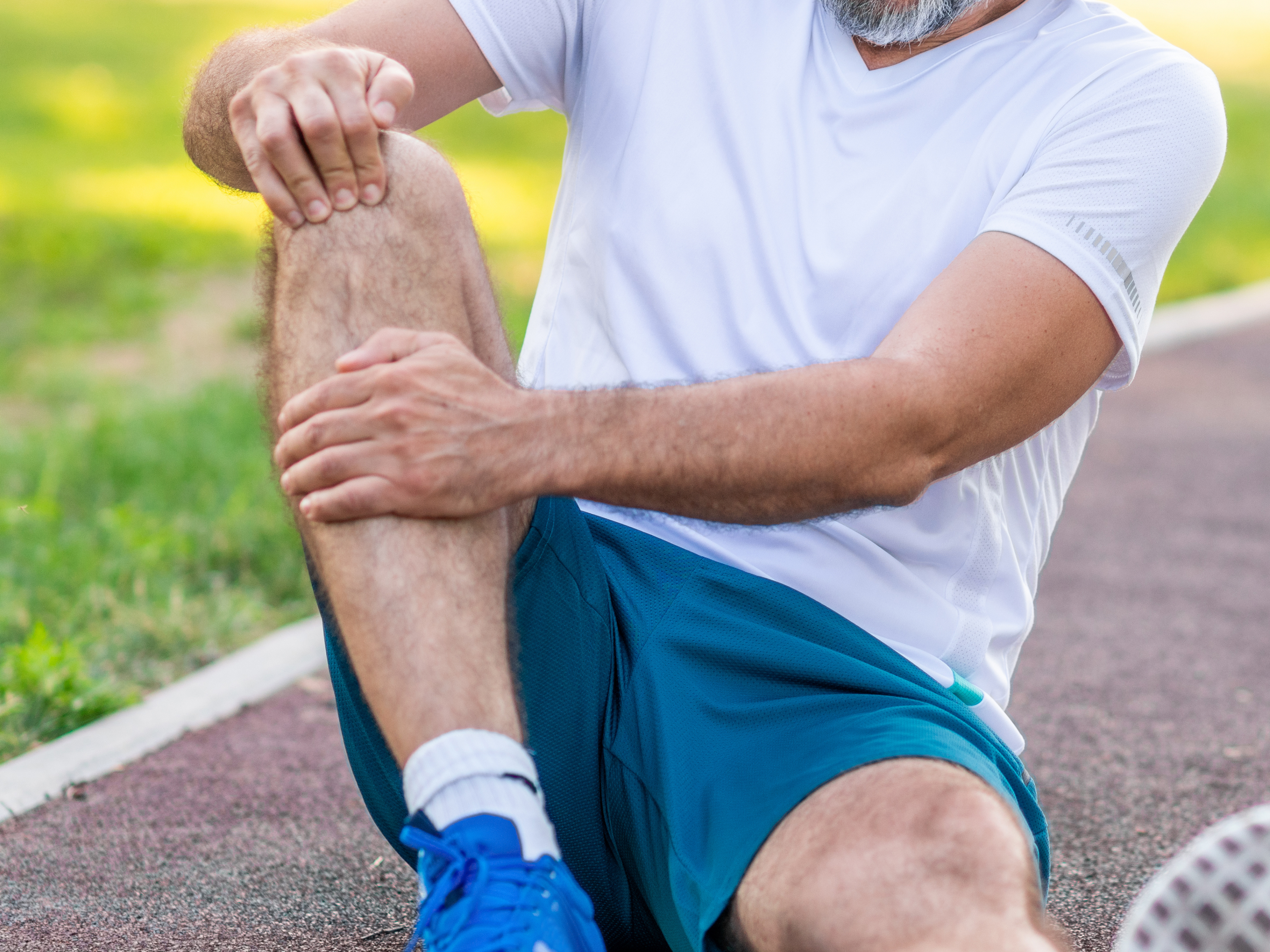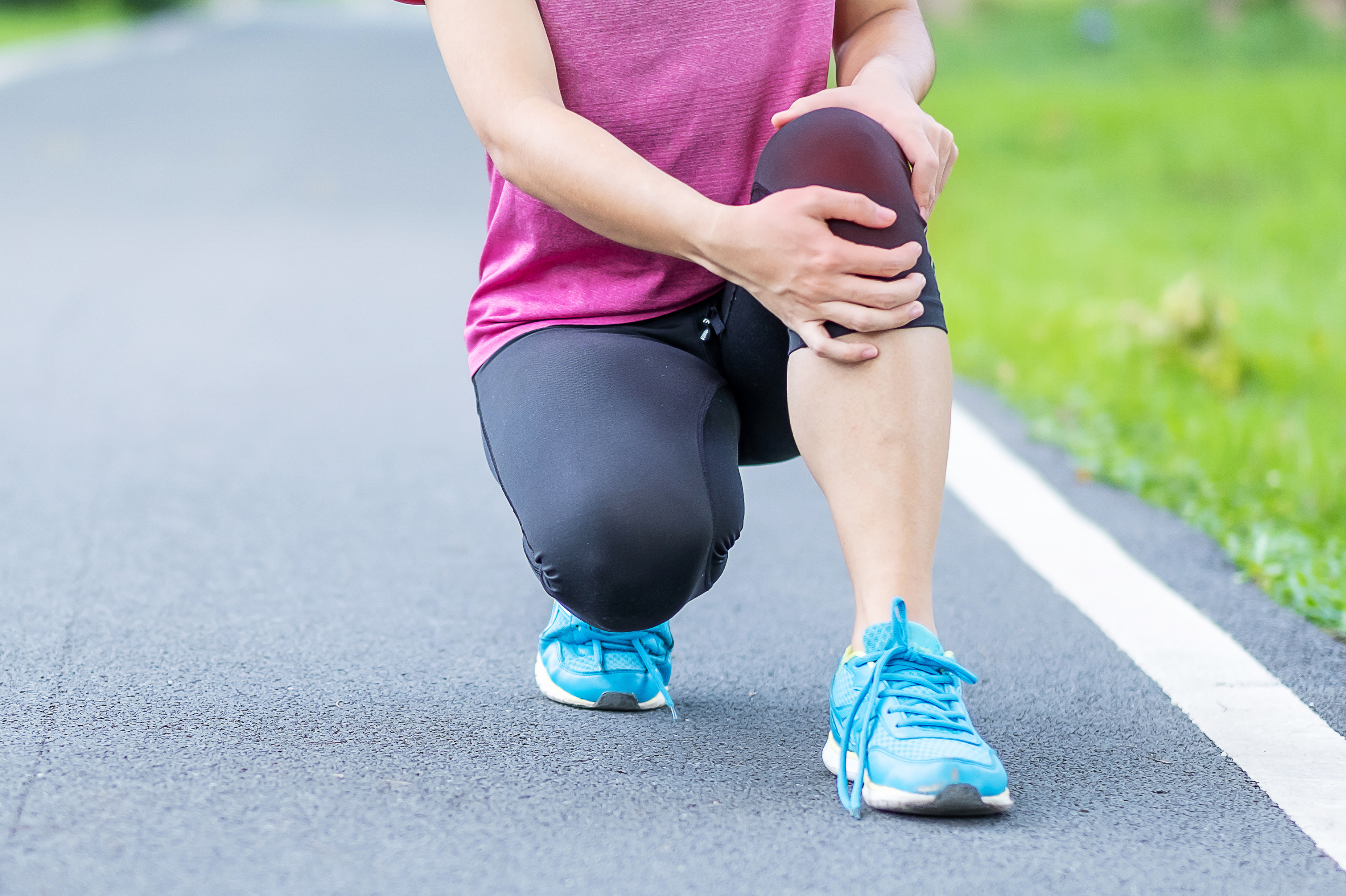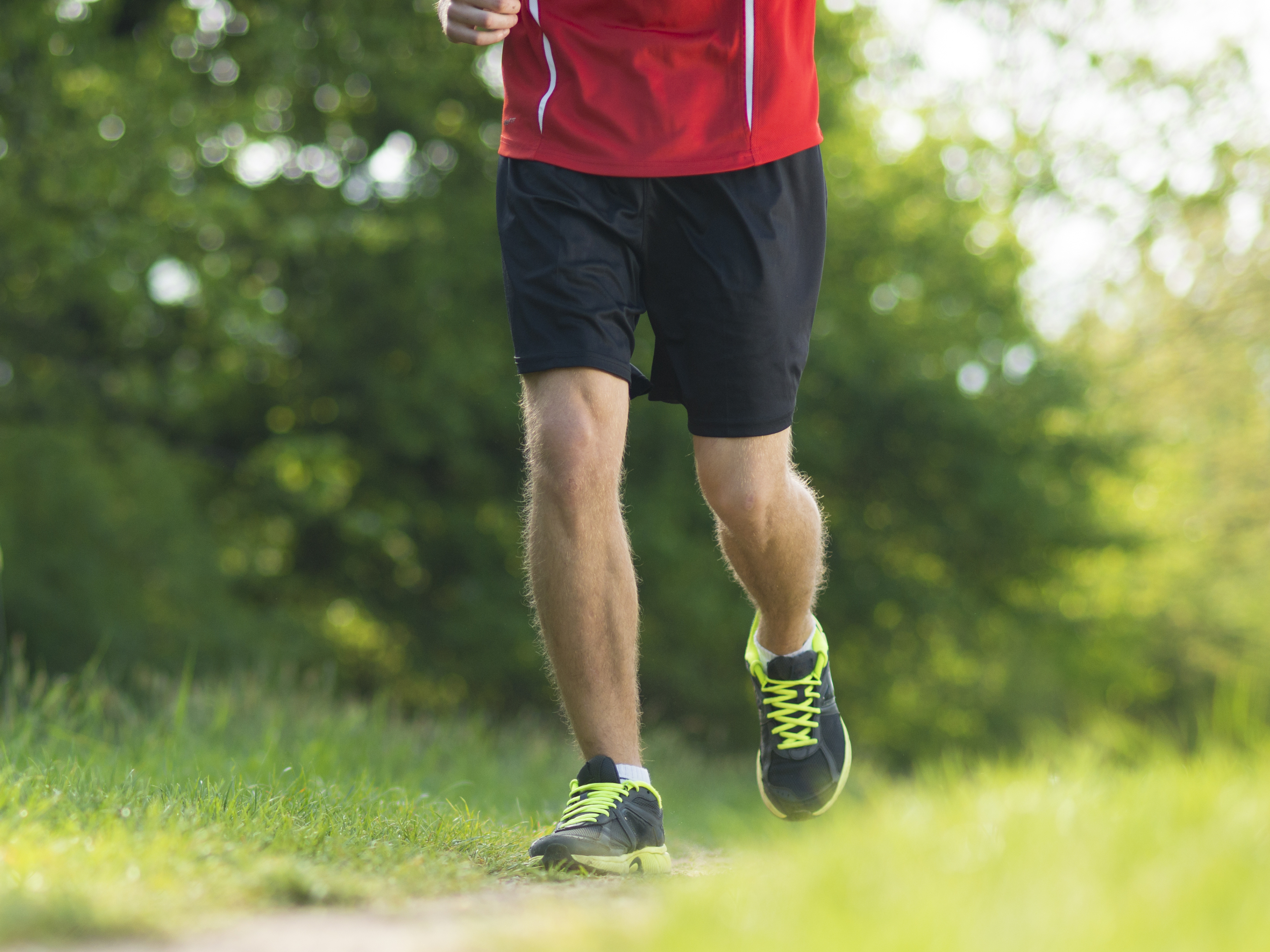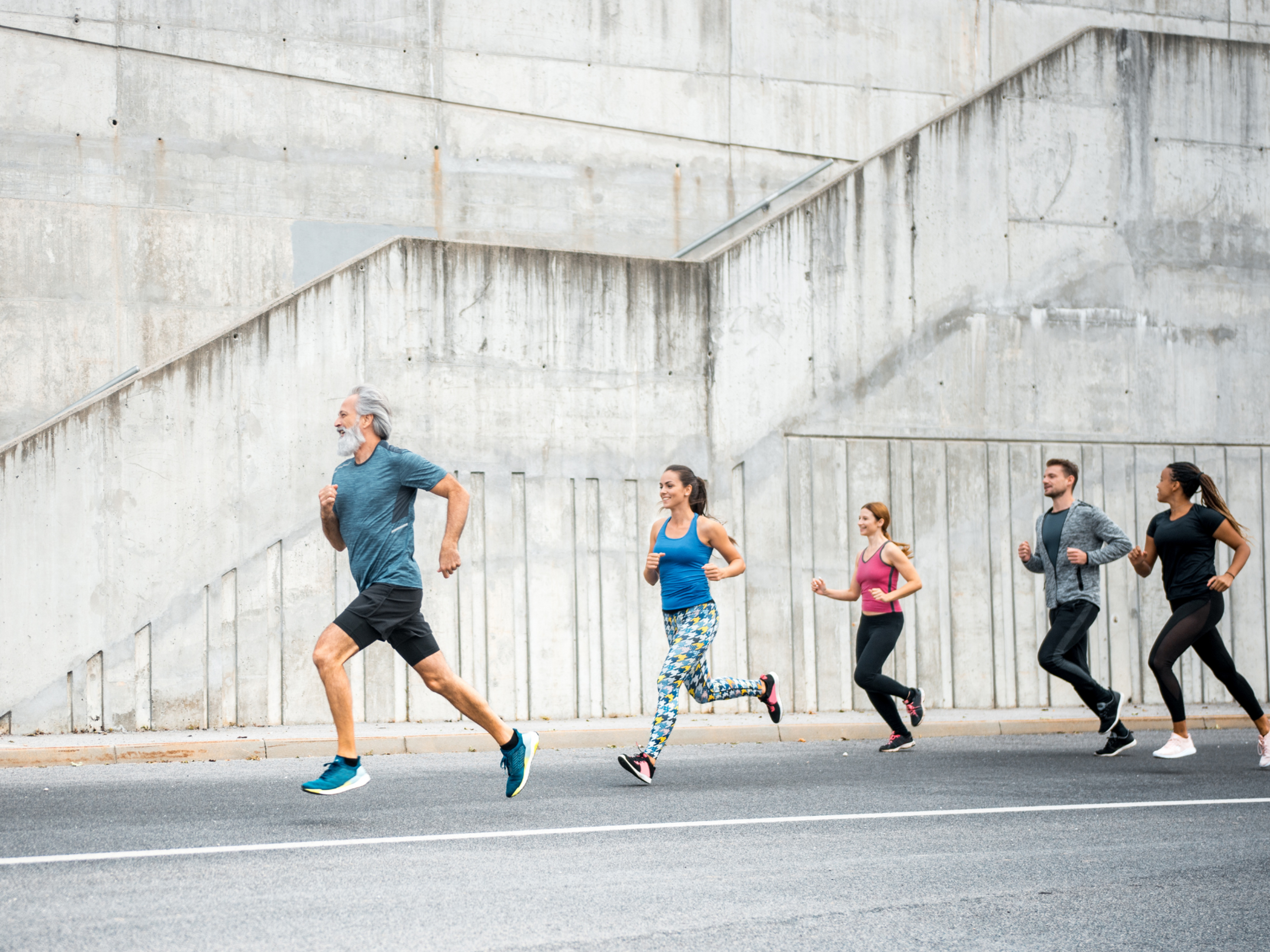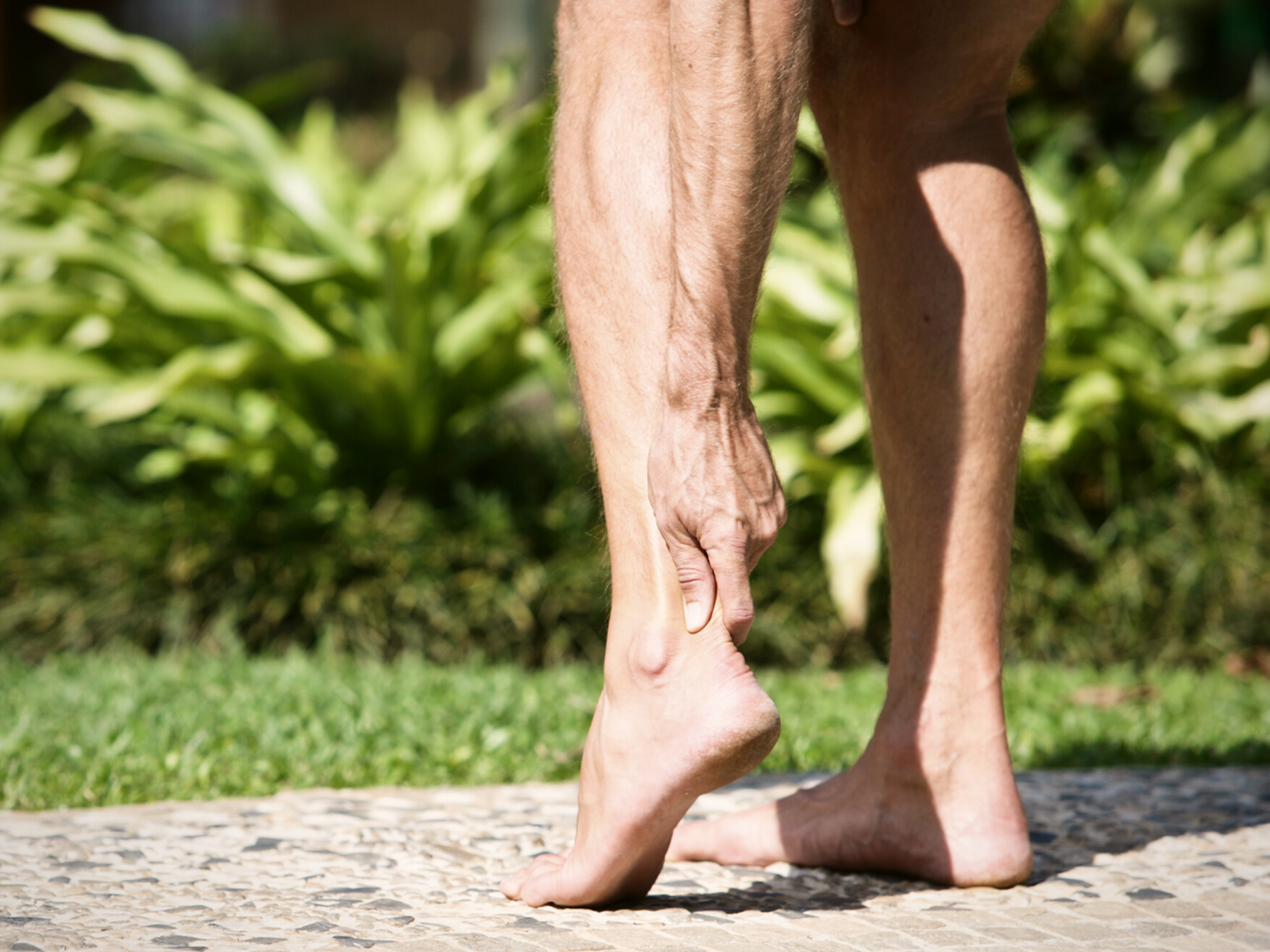Patellar tendonitis pain - Treatment and running advice
You can divide the treatments for patellar tendonitis into two groups:
- Ones that provide short-term pain relief - have no direct impact on healing but help you move more freely and do your rehab exercises with less pain
- And ones for long-term (lasting) pain relief - have a direct impact on the healing process and help restore the tendon's strength
Relative rest is a fundamental treatment strategy needed for short- and long-term recovery. So, let's start there.
1. How to use pain to master relative rest
Patellar tendonitis causes your tendon to become sensitive and lose some strength, which explains why activities that used to be pain-free now hurt.
Relative rest aims to keep you as active as possible without worsening your injury. It helps you maintain your general fitness, your tendon's current strength, and your motivation.
Complete rest can lead to your tendon losing even more strength - further contributing to your patellar tendon pain. Therefore, complete rest is only recommended in severe cases and for short periods.
In practice, relative rest means that you use the guidelines discussed below and:
- Continue activities that don't increase your tendon pain significantly
- See if you can adapt activities that increase your pain (e.g., run shorter distances or on less hilly terrain, etc.) so they fall into the acceptable level
- Only cut out activities that continue to aggravate your pain despite making adjustments
Activities that might increase your pain when you have patellar tendonitis include:
- Squatting
- Kneeling
- Stair climbing
- Running
- Jumping
Severity of pain vs. severity of injury
It's normal to think that it must be a bad injury when something hurts a lot. Or that you've worsened your injury if your pain suddenly increases.
But actually, research suggests that this is not how pain works.
Studies have shown that:
- People often have pain long after their injury has healed, which means that pain can be present even in the absence of injury.
- Sometimes, a person may feel no pain, but the scan clearly shows an injury.
- Other times, the scan may show only a minor injury, but the pain is excruciating.
We now understand that pain is simply the "alarm system" of the body, and your (subconscious) brain sounds the alarm whenever it thinks you may be in danger.
When you're injured, the alarm system (pain) gets triggered more easily, even for activities that don't actually make your injury worse.
Take a look at our article about chronic pain if you want to understand what factors can cause your alarm system to become hypersensitive.
The current research suggests that it is absolutely fine and expected to feel discomfort while doing rehab and other activities as long as you don't push it past a certain level.
Some pain is OK, but how much?
Can I continue running with patellar tendonitis pain?
2. Rehab exercises for patellar tendonitis
By choosing your rehab exercises to match your patellar tendon's current levels of strength and sensitivity, you can achieve both short- and long-term pain relief.
Best exercises for short-term pain relief
Isometric exercises, that contract your muscles without moving your joints, can help provide immediate relief from patellar tendon pain.
Studies show they work by reducing your pain perception on a cortical (brain) level, meaning the exercise "turns down the volume" on pain signals from your patellar tendon, making you experience less pain.
A common isometric exercise for patellar tendonitis pain relief is the isometric wall-sit.
The Exakt Health app makes it much easier for you to pitch your exercise level correctly. You can start using it at any stage of your recovery.
The app will automatically set your training intensity to suit your tendon's strength and adjust your program based on your feedback after every training session, helping you progress toward a full return to running.
Best exercises for long-term pain relief
You must restore your patellar tendon's strength to attain long-term pain relief.
The best way to achieve this is through following a graded rehab plan that:
- Uses exercises that directly load the patellar tendon - the exercise most commonly used in research studies is the squat
- Start with very low loads that match your tendon's current ability
- Slowly increase the load as your tendon recovers until it matches the forces and loads your tendon will have to endure when doing your sport
We've previously discussed in detail how you can adapt the squat exercise for the different stages of patellar tendonitis recovery.
3. Patellar tendon straps (or taping)
Do patellar tendon straps and taping work?
Patellar tendon straps and tape may help reduce pain during rehab exercises and sports, but they only provide short-term pain relief.
They shouldn't be used as a standalone treatment. Instead, use them, if needed, alongside a graded strength training program.
How do patellar tendon straps work?
Researchers think that patellar tendon straps can help reduce patellar tendon pain by:
- Holding the kneecap in a more favorable position, reducing excessive pulling on the tendon
- Changing the tendon angle, redirecting the force away from the painful area
- Improving knee proprioception (joint position sense), helping optimize your movement
Although these theories sound reasonable, the research is inconclusive. So, they may work for some, and not for others.
If you're considering using a patellar tendon strap for your pain, be sure it's
- Comfortable: Snug but not too tight
- Fitted correctly: Over the lower edge of your kneecap, with the padded portion resting on the tendon
- Adjustable: Be able to loosen or tighten as needed for comfort
4. Shockwave therapy
Shockwave therapy may help reduce pain and stiffness associated with patellar tendonitis, but the evidence shows mixed results overall. As a result, it's best to use it only in special cases.
For instance, if your pain keeps you from doing rehab exercises, shockwave therapy may help reduce your pain to help you get back to activity and progress your recovery. But, if you can exercise with minimal pain, there's evidence that shockwave therapy will likely not be more beneficial for your pain than doing tendon loading rehab exercises on their own.
Consult a doctor or physical therapist if you want to know if this option is for you.
5. Massage
Massage can be a helpful tool to provide short-term pain relief, but it doesn't directly impact healing.
Avoid using vigorous massage techniques over the tendon itself. It can irritate your patellar tendon and increase your pain (similar to pressing on a bruise).
6. Icing your patellar tendon
Cooling your injured tendon can help reduce your pain. But you should only use ice when necessary because it can also reduce your strength gains if you use it after every rehab session.
If you need ice to control pain after every workout or exercise, you may be working at a too high level. In that case, instead of continuing to use ice to ease your pain, reassess your exercise level, adjust it, and test to see if your pain improves.
It's also best to avoid icing before exercise. Some studies show icing slows down your nerve and muscle responses. As a result, it leads to reduced balance, proprioception (joint position sense), and muscle strength, which can increase your risk of worsening your injury or developing a new one.
Extra guidelines for using ice safely
- Protect your skin: Place a wet towel or cloth between your skin and the ice
- Apply it for the right amount of time: 10min on - 10min off - 10min on again
- Don't use ice if you have poor circulation, loss of sensation, or an open wound in that area
7. Electrotherapy
You may come across electrotherapies such as ultrasound, laser therapy, and electrical stimulation as potential treatments for patellar tendonitis. However, the evidence for their effectiveness is poor, so they're not considered first-line treatments for patellar tendonitis.
8. What about medication?
Although NSAIDs (non-steroidal anti-inflammatory drugs) can reduce pain, they can delay tendon healing. So, avoid them or use them cautiously and only as directed by your healthcare provider.
You can read more about how NSAIDs affect your healing in this article, where we discuss it in more detail.
Final thoughts
There is no one-size-fits-all treatment approach that works for everyone with patellar tendonitis.
Relative rest and rehab exercises are the two most important components to get right. However, if pain persists or interferes with your rehab, it might be worth adding in some of the other treatment options.
Need more help with your rehab? The Exakt Health app makes managing patellar tendonitis pain and understanding your body's limits much simpler.
The app, designed with expert physical therapists, offers personalized exercises and robust monitoring tools that help you determine your tendon's load tolerance and track your recovery progress.
